Exploring western Tanzania
Many of you may have never heard of Katavi and Mahale and this is understandable. Whilst the Ngorongoro Crater and the Serengeti attract most of the media and tourist attention, the wildlife havens in the West of Tanzania are often left forgotten. Although the South of Tanzania has Selous and Ruaha which are both wild, untamed and far less commercialised than its Northern counterparts, the West takes wild and untamed to a different level. With the remoteness of these parks, the exclusivity and privacy you can get from a trip to the West is almost unrivaled in modern Africa. With more and more people visiting Africa in an ever-more-connected world, getting away from the crowds isn’t an easy thing to do.
 With flights being very irregular (twice a week) getting here isn’t cheap or the easiest thing to do, but it is definitely worth it. If you’re staying at Nomad’s camps, they charter a plane that leaves on Mondays and Thursdays which starts in Arusha before making its circuit through Katavi and Mahale before flying back. The cost of the circuit is around $1,500 per person; however pick-ups can be arranged from the Serengeti as an extra if you’re already on safari! The other option is to use Safari AirLink who also offer the Monday and Thursday circuits, but this leaves from Ruaha and finishes in Zanzibar going via Katavi, Mahale, Ruaha (again) Selous and Dar es Salaam.
It is due to the remoteness of these camps that mean flights are only available on Thursdays and Mondays, but that is certainly not a bad thing! A typical trip would see you spend 3 days in Katavi followed by 4 days in Mahale, or vice versa depending on how you wanted to plan it.
Greystoke Mahale
Set on the pristine white sands of the banks of Lake Tanganyika, Greystoke Mahale is one of the most magical places in Tanzania. With six open fronted, thatched bandas tucked into the lush forest that boarder the beach, the idea of being a sustainable and environmentally friendly camp is at the forefront of Nomad’s minds. With only six bandas, there will definitely be no-overcrowding here and only those aged eight or over are permitted, however a further age restriction of twelve is enforced for the main activity…
With flights being very irregular (twice a week) getting here isn’t cheap or the easiest thing to do, but it is definitely worth it. If you’re staying at Nomad’s camps, they charter a plane that leaves on Mondays and Thursdays which starts in Arusha before making its circuit through Katavi and Mahale before flying back. The cost of the circuit is around $1,500 per person; however pick-ups can be arranged from the Serengeti as an extra if you’re already on safari! The other option is to use Safari AirLink who also offer the Monday and Thursday circuits, but this leaves from Ruaha and finishes in Zanzibar going via Katavi, Mahale, Ruaha (again) Selous and Dar es Salaam.
It is due to the remoteness of these camps that mean flights are only available on Thursdays and Mondays, but that is certainly not a bad thing! A typical trip would see you spend 3 days in Katavi followed by 4 days in Mahale, or vice versa depending on how you wanted to plan it.
Greystoke Mahale
Set on the pristine white sands of the banks of Lake Tanganyika, Greystoke Mahale is one of the most magical places in Tanzania. With six open fronted, thatched bandas tucked into the lush forest that boarder the beach, the idea of being a sustainable and environmentally friendly camp is at the forefront of Nomad’s minds. With only six bandas, there will definitely be no-overcrowding here and only those aged eight or over are permitted, however a further age restriction of twelve is enforced for the main activity…
 Observing primates is something that is almost indescribable. Watching them go about their daily lives and seeing how similar they are to us is a truly humbling experience, and this is why people visit Mahale. The mountains that are enveloped by lush tropical forest shelter one of the world’s largest known chimpanzee populations. Each day, treks are undertaken to find these primates and sometimes they are fifteen minutes from camp, other times they can be three hours away. Chimpanzee trekking can be undertaken all year round, so whilst other destinations are shut during the April and May rainy season in Tanzania, Mahale is open. It is during the dry season and especially towards the end, (between July and October) when the chance of seeing the chimpanzees is greater and is generally a more popular time of year to go. The chimpanzees tend to congregate lower down the slopes to feed which makes them more accessible.
Observing primates is something that is almost indescribable. Watching them go about their daily lives and seeing how similar they are to us is a truly humbling experience, and this is why people visit Mahale. The mountains that are enveloped by lush tropical forest shelter one of the world’s largest known chimpanzee populations. Each day, treks are undertaken to find these primates and sometimes they are fifteen minutes from camp, other times they can be three hours away. Chimpanzee trekking can be undertaken all year round, so whilst other destinations are shut during the April and May rainy season in Tanzania, Mahale is open. It is during the dry season and especially towards the end, (between July and October) when the chance of seeing the chimpanzees is greater and is generally a more popular time of year to go. The chimpanzees tend to congregate lower down the slopes to feed which makes them more accessible.
 When you aren’t trekking to find the chimpanzees, there are plenty of other activities on offer. Forest hikes with a guide are available if you want to keep active, but water activities like kayaking, fishing or sailing on a dhow boat are perfect ways to make the most of the crystal clear waters of Lake Tanganyika. If rest and relaxation sounds more like the thing for you, then relaxing on the shore line is a must, as is chilling out in the bar area which is located on the beach. The beautiful panoramic views of the surrounding utopia can be savoured along with a cocktail of your choice. Nomad also offers a great seven for six deal whether you’re only staying at Greystoke or if you’re wanting to combine it with Chada in Katavi.
When you aren’t trekking to find the chimpanzees, there are plenty of other activities on offer. Forest hikes with a guide are available if you want to keep active, but water activities like kayaking, fishing or sailing on a dhow boat are perfect ways to make the most of the crystal clear waters of Lake Tanganyika. If rest and relaxation sounds more like the thing for you, then relaxing on the shore line is a must, as is chilling out in the bar area which is located on the beach. The beautiful panoramic views of the surrounding utopia can be savoured along with a cocktail of your choice. Nomad also offers a great seven for six deal whether you’re only staying at Greystoke or if you’re wanting to combine it with Chada in Katavi.
 Katavi National Park
Visiting Katavi is like going back in time, whilst we often describe Selous and Ruaha as wild and untamed; Katavi is like an untouched wildlife paradise. It is Tanzania’s third largest park and at four-thousand five hundred square kilometres, it is bigger than Luxembourg, but due to its location it only receives a few hundred visitors per year.
Katavi National Park
Visiting Katavi is like going back in time, whilst we often describe Selous and Ruaha as wild and untamed; Katavi is like an untouched wildlife paradise. It is Tanzania’s third largest park and at four-thousand five hundred square kilometres, it is bigger than Luxembourg, but due to its location it only receives a few hundred visitors per year.
 The park is fed by the seasonal Katuma River and is bordered by Lakes Chada and Katavi. The year sees two extreme seasons: wet and dry. Between November and May the park is turned into a fertile utopia as vast wetlands spread into the horizon. As the dry season progresses, this is when Katavi becomes the place to visit. The wetlands dry revealing sparse grassy plains and thousands of buffaloes and elephants congregate at the ever drying water sources. Pods of hippos jostle in their hundreds for a place in the mud and crocodiles use the eroded holes in the riverbanks as shelter. As the water continues to dry, the mega-fauna of the area becomes ever-more desperate and the weak are preyed upon by lions, hyenas and leopards, making for outstanding wildlife viewing.
The park is fed by the seasonal Katuma River and is bordered by Lakes Chada and Katavi. The year sees two extreme seasons: wet and dry. Between November and May the park is turned into a fertile utopia as vast wetlands spread into the horizon. As the dry season progresses, this is when Katavi becomes the place to visit. The wetlands dry revealing sparse grassy plains and thousands of buffaloes and elephants congregate at the ever drying water sources. Pods of hippos jostle in their hundreds for a place in the mud and crocodiles use the eroded holes in the riverbanks as shelter. As the water continues to dry, the mega-fauna of the area becomes ever-more desperate and the weak are preyed upon by lions, hyenas and leopards, making for outstanding wildlife viewing.
 Unlike the National Parks in other parts of Tanzania where off-roading is strictly prohibited, with Katavi’s few visitors, off-roading is generally allowed, allowing for fantastic photo opportunities and allowing you to follow the predators as they go on the hunt.
The beauty of Katavi also lies with its camps. Authentic, intimate and with great guiding, staying in Katavi isn’t an exuberant luxury experience, instead it is an opportunity to immerse yourself in a true African safari. Nomad’s Chada comprises of six canvas tents that have en-suites and bucket showers, but there is also the option to fly-camp. One of the best things to do on safari is sleep under the stars and whilst a number of camps offer this throughout Africa, in Katavi the feeling of being in true wilderness is hard to beat.
Unlike the National Parks in other parts of Tanzania where off-roading is strictly prohibited, with Katavi’s few visitors, off-roading is generally allowed, allowing for fantastic photo opportunities and allowing you to follow the predators as they go on the hunt.
The beauty of Katavi also lies with its camps. Authentic, intimate and with great guiding, staying in Katavi isn’t an exuberant luxury experience, instead it is an opportunity to immerse yourself in a true African safari. Nomad’s Chada comprises of six canvas tents that have en-suites and bucket showers, but there is also the option to fly-camp. One of the best things to do on safari is sleep under the stars and whilst a number of camps offer this throughout Africa, in Katavi the feeling of being in true wilderness is hard to beat.
 Just like Mahale, when visiting Katavi, Nomad do offer a seven for six deal at Chada Camp that can be used in conjunction with Mahale or just as a single camp deal, making it great value.
If you haven’t ventured West in Tanzania, then it is certainly time to do so.
Marc Harris is Managing Director of Tanzania Odyssey. Tanzania Odyssey is a leading tour operator that has specialised in Tanzania since 1998.
If you would like to be a guest blogger on A Luxury Travel Blog in order to raise your profile, please contact us.
Just like Mahale, when visiting Katavi, Nomad do offer a seven for six deal at Chada Camp that can be used in conjunction with Mahale or just as a single camp deal, making it great value.
If you haven’t ventured West in Tanzania, then it is certainly time to do so.
Marc Harris is Managing Director of Tanzania Odyssey. Tanzania Odyssey is a leading tour operator that has specialised in Tanzania since 1998.
If you would like to be a guest blogger on A Luxury Travel Blog in order to raise your profile, please contact us.
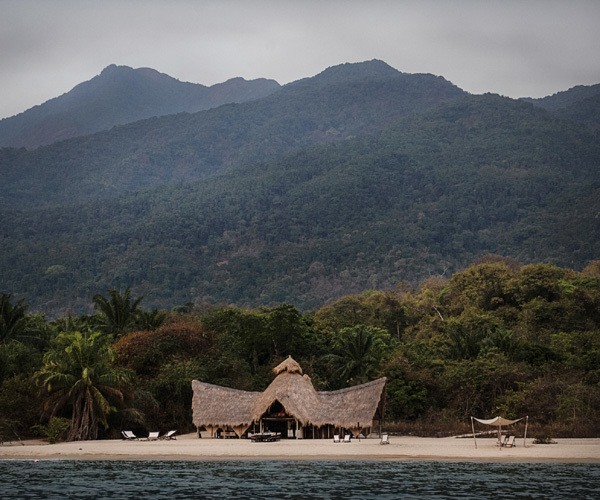 With flights being very irregular (twice a week) getting here isn’t cheap or the easiest thing to do, but it is definitely worth it. If you’re staying at Nomad’s camps, they charter a plane that leaves on Mondays and Thursdays which starts in Arusha before making its circuit through Katavi and Mahale before flying back. The cost of the circuit is around $1,500 per person; however pick-ups can be arranged from the Serengeti as an extra if you’re already on safari! The other option is to use Safari AirLink who also offer the Monday and Thursday circuits, but this leaves from Ruaha and finishes in Zanzibar going via Katavi, Mahale, Ruaha (again) Selous and Dar es Salaam.
It is due to the remoteness of these camps that mean flights are only available on Thursdays and Mondays, but that is certainly not a bad thing! A typical trip would see you spend 3 days in Katavi followed by 4 days in Mahale, or vice versa depending on how you wanted to plan it.
Greystoke Mahale
Set on the pristine white sands of the banks of Lake Tanganyika, Greystoke Mahale is one of the most magical places in Tanzania. With six open fronted, thatched bandas tucked into the lush forest that boarder the beach, the idea of being a sustainable and environmentally friendly camp is at the forefront of Nomad’s minds. With only six bandas, there will definitely be no-overcrowding here and only those aged eight or over are permitted, however a further age restriction of twelve is enforced for the main activity…
With flights being very irregular (twice a week) getting here isn’t cheap or the easiest thing to do, but it is definitely worth it. If you’re staying at Nomad’s camps, they charter a plane that leaves on Mondays and Thursdays which starts in Arusha before making its circuit through Katavi and Mahale before flying back. The cost of the circuit is around $1,500 per person; however pick-ups can be arranged from the Serengeti as an extra if you’re already on safari! The other option is to use Safari AirLink who also offer the Monday and Thursday circuits, but this leaves from Ruaha and finishes in Zanzibar going via Katavi, Mahale, Ruaha (again) Selous and Dar es Salaam.
It is due to the remoteness of these camps that mean flights are only available on Thursdays and Mondays, but that is certainly not a bad thing! A typical trip would see you spend 3 days in Katavi followed by 4 days in Mahale, or vice versa depending on how you wanted to plan it.
Greystoke Mahale
Set on the pristine white sands of the banks of Lake Tanganyika, Greystoke Mahale is one of the most magical places in Tanzania. With six open fronted, thatched bandas tucked into the lush forest that boarder the beach, the idea of being a sustainable and environmentally friendly camp is at the forefront of Nomad’s minds. With only six bandas, there will definitely be no-overcrowding here and only those aged eight or over are permitted, however a further age restriction of twelve is enforced for the main activity…
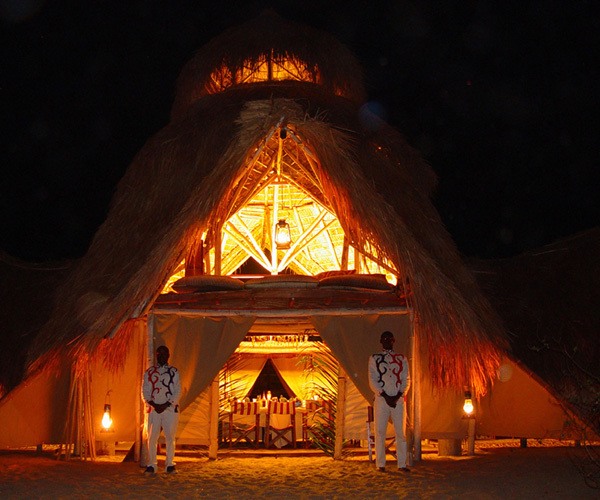 Observing primates is something that is almost indescribable. Watching them go about their daily lives and seeing how similar they are to us is a truly humbling experience, and this is why people visit Mahale. The mountains that are enveloped by lush tropical forest shelter one of the world’s largest known chimpanzee populations. Each day, treks are undertaken to find these primates and sometimes they are fifteen minutes from camp, other times they can be three hours away. Chimpanzee trekking can be undertaken all year round, so whilst other destinations are shut during the April and May rainy season in Tanzania, Mahale is open. It is during the dry season and especially towards the end, (between July and October) when the chance of seeing the chimpanzees is greater and is generally a more popular time of year to go. The chimpanzees tend to congregate lower down the slopes to feed which makes them more accessible.
Observing primates is something that is almost indescribable. Watching them go about their daily lives and seeing how similar they are to us is a truly humbling experience, and this is why people visit Mahale. The mountains that are enveloped by lush tropical forest shelter one of the world’s largest known chimpanzee populations. Each day, treks are undertaken to find these primates and sometimes they are fifteen minutes from camp, other times they can be three hours away. Chimpanzee trekking can be undertaken all year round, so whilst other destinations are shut during the April and May rainy season in Tanzania, Mahale is open. It is during the dry season and especially towards the end, (between July and October) when the chance of seeing the chimpanzees is greater and is generally a more popular time of year to go. The chimpanzees tend to congregate lower down the slopes to feed which makes them more accessible.
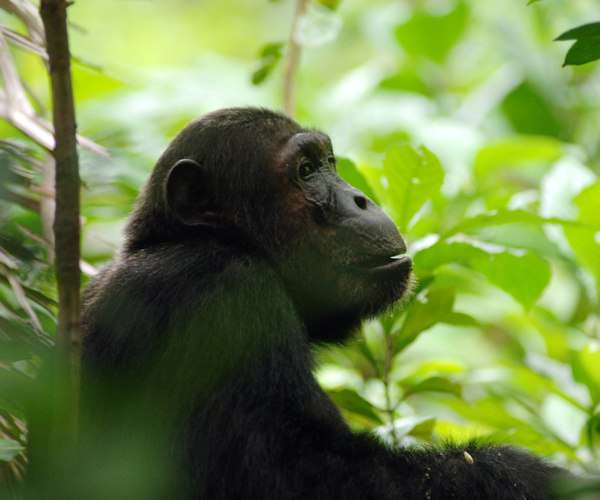 When you aren’t trekking to find the chimpanzees, there are plenty of other activities on offer. Forest hikes with a guide are available if you want to keep active, but water activities like kayaking, fishing or sailing on a dhow boat are perfect ways to make the most of the crystal clear waters of Lake Tanganyika. If rest and relaxation sounds more like the thing for you, then relaxing on the shore line is a must, as is chilling out in the bar area which is located on the beach. The beautiful panoramic views of the surrounding utopia can be savoured along with a cocktail of your choice. Nomad also offers a great seven for six deal whether you’re only staying at Greystoke or if you’re wanting to combine it with Chada in Katavi.
When you aren’t trekking to find the chimpanzees, there are plenty of other activities on offer. Forest hikes with a guide are available if you want to keep active, but water activities like kayaking, fishing or sailing on a dhow boat are perfect ways to make the most of the crystal clear waters of Lake Tanganyika. If rest and relaxation sounds more like the thing for you, then relaxing on the shore line is a must, as is chilling out in the bar area which is located on the beach. The beautiful panoramic views of the surrounding utopia can be savoured along with a cocktail of your choice. Nomad also offers a great seven for six deal whether you’re only staying at Greystoke or if you’re wanting to combine it with Chada in Katavi.
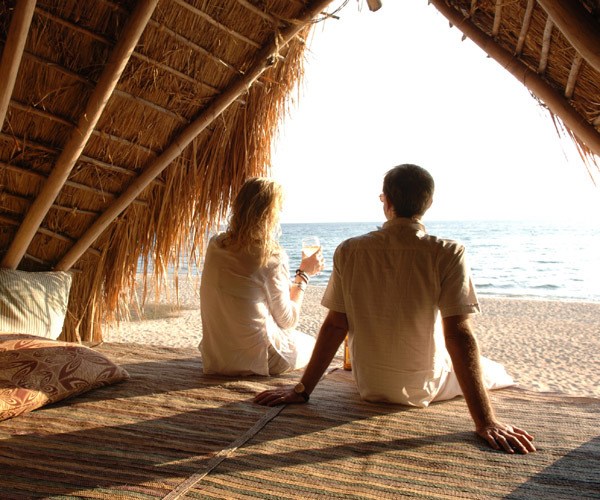 Katavi National Park
Visiting Katavi is like going back in time, whilst we often describe Selous and Ruaha as wild and untamed; Katavi is like an untouched wildlife paradise. It is Tanzania’s third largest park and at four-thousand five hundred square kilometres, it is bigger than Luxembourg, but due to its location it only receives a few hundred visitors per year.
Katavi National Park
Visiting Katavi is like going back in time, whilst we often describe Selous and Ruaha as wild and untamed; Katavi is like an untouched wildlife paradise. It is Tanzania’s third largest park and at four-thousand five hundred square kilometres, it is bigger than Luxembourg, but due to its location it only receives a few hundred visitors per year.
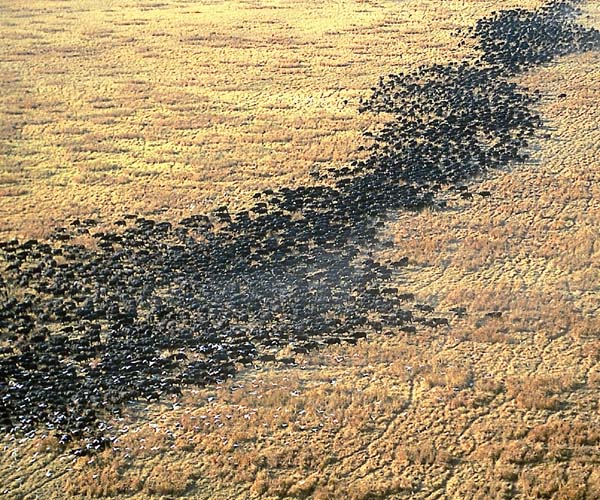 The park is fed by the seasonal Katuma River and is bordered by Lakes Chada and Katavi. The year sees two extreme seasons: wet and dry. Between November and May the park is turned into a fertile utopia as vast wetlands spread into the horizon. As the dry season progresses, this is when Katavi becomes the place to visit. The wetlands dry revealing sparse grassy plains and thousands of buffaloes and elephants congregate at the ever drying water sources. Pods of hippos jostle in their hundreds for a place in the mud and crocodiles use the eroded holes in the riverbanks as shelter. As the water continues to dry, the mega-fauna of the area becomes ever-more desperate and the weak are preyed upon by lions, hyenas and leopards, making for outstanding wildlife viewing.
The park is fed by the seasonal Katuma River and is bordered by Lakes Chada and Katavi. The year sees two extreme seasons: wet and dry. Between November and May the park is turned into a fertile utopia as vast wetlands spread into the horizon. As the dry season progresses, this is when Katavi becomes the place to visit. The wetlands dry revealing sparse grassy plains and thousands of buffaloes and elephants congregate at the ever drying water sources. Pods of hippos jostle in their hundreds for a place in the mud and crocodiles use the eroded holes in the riverbanks as shelter. As the water continues to dry, the mega-fauna of the area becomes ever-more desperate and the weak are preyed upon by lions, hyenas and leopards, making for outstanding wildlife viewing.
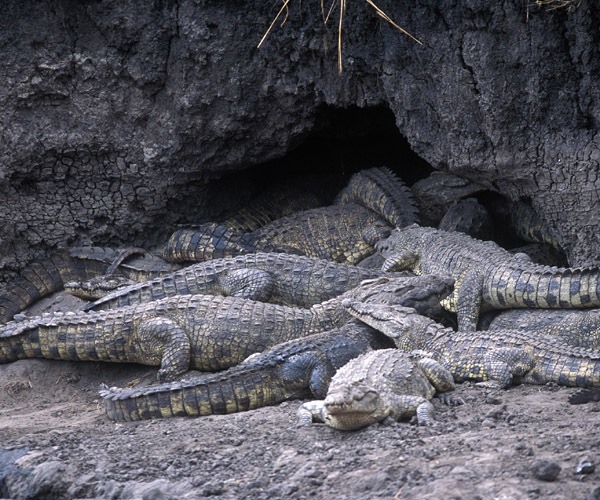 Unlike the National Parks in other parts of Tanzania where off-roading is strictly prohibited, with Katavi’s few visitors, off-roading is generally allowed, allowing for fantastic photo opportunities and allowing you to follow the predators as they go on the hunt.
The beauty of Katavi also lies with its camps. Authentic, intimate and with great guiding, staying in Katavi isn’t an exuberant luxury experience, instead it is an opportunity to immerse yourself in a true African safari. Nomad’s Chada comprises of six canvas tents that have en-suites and bucket showers, but there is also the option to fly-camp. One of the best things to do on safari is sleep under the stars and whilst a number of camps offer this throughout Africa, in Katavi the feeling of being in true wilderness is hard to beat.
Unlike the National Parks in other parts of Tanzania where off-roading is strictly prohibited, with Katavi’s few visitors, off-roading is generally allowed, allowing for fantastic photo opportunities and allowing you to follow the predators as they go on the hunt.
The beauty of Katavi also lies with its camps. Authentic, intimate and with great guiding, staying in Katavi isn’t an exuberant luxury experience, instead it is an opportunity to immerse yourself in a true African safari. Nomad’s Chada comprises of six canvas tents that have en-suites and bucket showers, but there is also the option to fly-camp. One of the best things to do on safari is sleep under the stars and whilst a number of camps offer this throughout Africa, in Katavi the feeling of being in true wilderness is hard to beat.
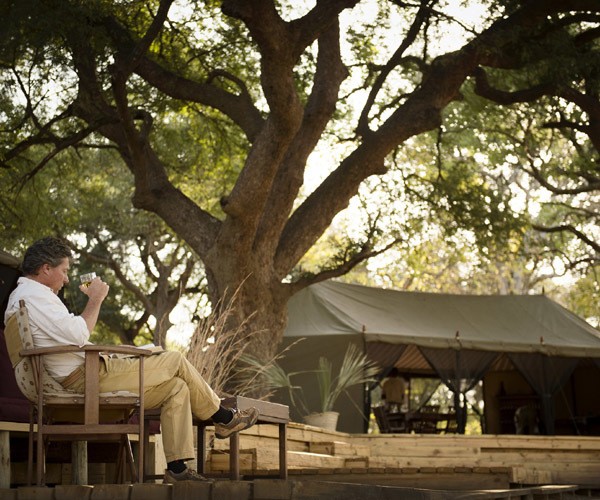 Just like Mahale, when visiting Katavi, Nomad do offer a seven for six deal at Chada Camp that can be used in conjunction with Mahale or just as a single camp deal, making it great value.
If you haven’t ventured West in Tanzania, then it is certainly time to do so.
Marc Harris is Managing Director of Tanzania Odyssey. Tanzania Odyssey is a leading tour operator that has specialised in Tanzania since 1998.
If you would like to be a guest blogger on A Luxury Travel Blog in order to raise your profile, please contact us.
Just like Mahale, when visiting Katavi, Nomad do offer a seven for six deal at Chada Camp that can be used in conjunction with Mahale or just as a single camp deal, making it great value.
If you haven’t ventured West in Tanzania, then it is certainly time to do so.
Marc Harris is Managing Director of Tanzania Odyssey. Tanzania Odyssey is a leading tour operator that has specialised in Tanzania since 1998.
If you would like to be a guest blogger on A Luxury Travel Blog in order to raise your profile, please contact us.Did you enjoy this article?
Receive similar content direct to your inbox.


You’ve really sold western Tanzania to me but it is so remote and far away. I like it that you are hardly going to see any other people. I like it that you’ve been honest about how limited the flights are and how expensive they are. A great place to get to but it’s a trip that would take some organising and quite a big travel budget too. It would be a trip of a lifetime.
Hi Janet,
Thank you for your comment and yes it really is a trip of a life-time and yes there are some great travel operators who can certainly help plan a trip like this!
Greystoke Mahale looks absolutely magical on every level. I want to get there!
Hi Jen,
Yes, we couldn’t recommend it highly enough!! It is a truly wonderful place.
I love that picture of the couple sitting at the front of their tent, obviously with drink in hand, looking out over the plains, for me it just sums up the spirit of the safari.
I’ve not been on a safari anywhere near as remote as western Tanzania and I haven’t stayed in any camps as luxuriously high-end as these but I have still had some similar great experiences.
I remember staying in one camp in Kenya and getting up to watch the sunset from my balcony and it was as if I could see forever across the plains. I’ve had some magical moments on safari already but from reading this western Tanzania seems really special.
Hi Nick,
Yes Western Tanzania is a hidden gem really. Visiting here is truly a trip of a life-time and will never be forgotten. As you rightly say though, safaris in general are special no matter your choice of destination.
The Serengeti definitely takes a lot of attention, but the difficulty with getting to Western Tanzania doesn’t help travellers much. It’s good there are options though, like a Sarai Airlink, so you can get there from other places. But $1,500 per person for a circuit seems very steep. I guess that’s part of the appeal though in the sense that it’s more of a once in a lifetime experience, something you can say you’ve done that it’s likely your friends and co-workers never have. The forest hikes and seeing the animals would be the biggest attraction for me, that kind of authentic experience. Having a more rugged trip and sleeping under the stars would be pretty cool but I’d probably opt for a little more modern day convenience and comfort with a tent and en-suite.
HI Paula,
Yes although it is expensive and not too easy, getting away from the crowds is what it’s all about!
There is certainly something for everyone in Tanzania.
I think $1,500 might be a little beyond my budget.
So I’m interested in Safari Air Link. What size of plane are we looking at and what sort of price? I don’t think that finishing in Zanzibar would be too much of a hardship.
I’ve read a lot about Selous recently so would like a stop there for a few days. Could you get a decent two or three site safari holiday out of this? And how long are the flights between destinations?
Hi Roger,
If you’re interested in a trip please feel free to email me at info@tanzaniaodyssey.com
I look forward to hearing from you.
Hello Marc,
Thanks for the offer once I get some idea of if / when we might be able to visit Tanzania I’ll get back in touch. And once / if I can get the funds in place!
Thanks,
Roger
HI Roger,
Fantastic. Looking forward to hearing from you soon.
Thanks,
Marc.